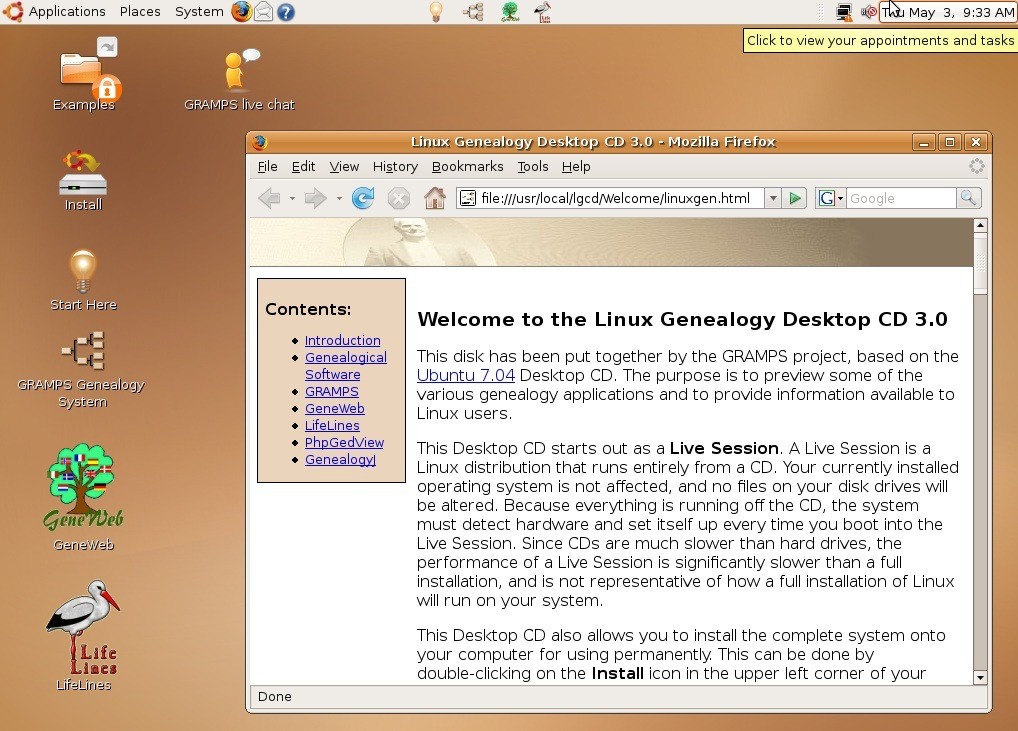Review GAMPS Geneology
GRAMPS - the Genealogical Research and Analysis Management Programming System.

Written by Adrian Rea
Geneaology is the study of family tree lines, tracing ancestors back as far records legends, or memories can remember. Research skills are the most important, and of those, documenting and backing up your findings is paramount. GRAMPS is a free, open source application that allows you to record your ancestral research findings in a comprehensive and professional interface, then you can produce reports on your data in a number of formats.
The GRAMPS project was started by Don Allingham, but has grown to a core set of dedicated developers that are continually expanding, tweaking and testing their product to make it evermore refined. With many open source projects, this development team is not an exclusive group, and anyone can join in to help, learn or test. Their community is based around mailing lists, IRC and a WIKI based website.
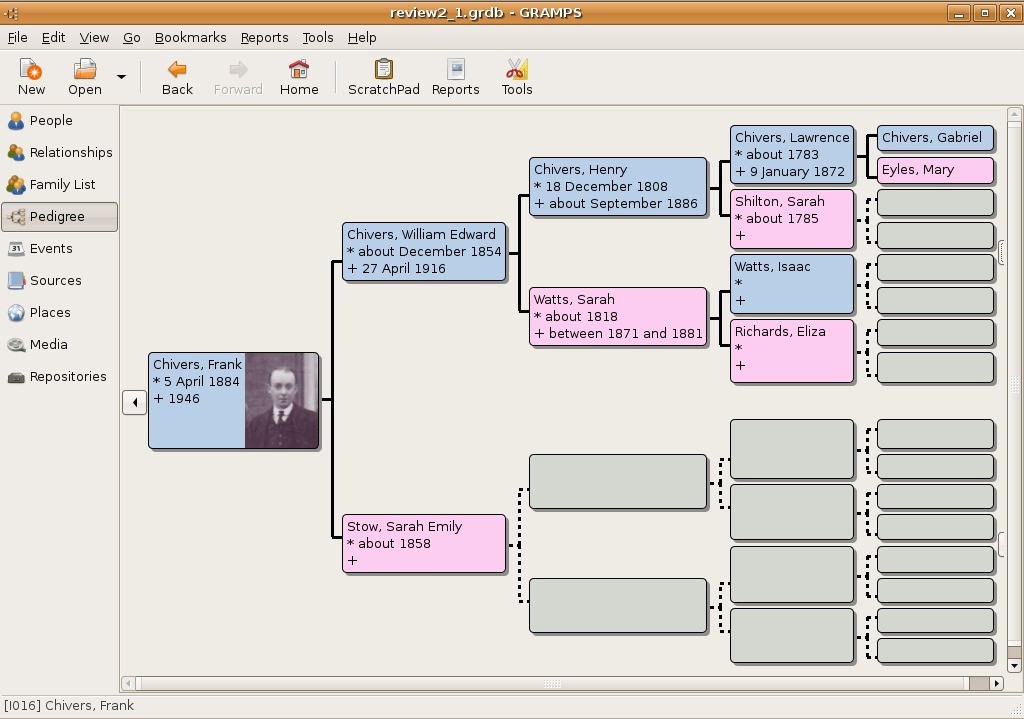
This application has been developed originally for Linux and Unix based machines but has been ported to other operating systems including Mac and Windows. For the Ubuntu community, GRAMPS installs and runs on all variants of Ubuntu, though there have been reported display issues with some KDE themes, so if this is a problem, there are remedies available on the website. The program is written in Python, using the GTK/GNOME interface making a database that is generally saved in its .grdb format but is best archived in the larger and slightly slower .xml format.
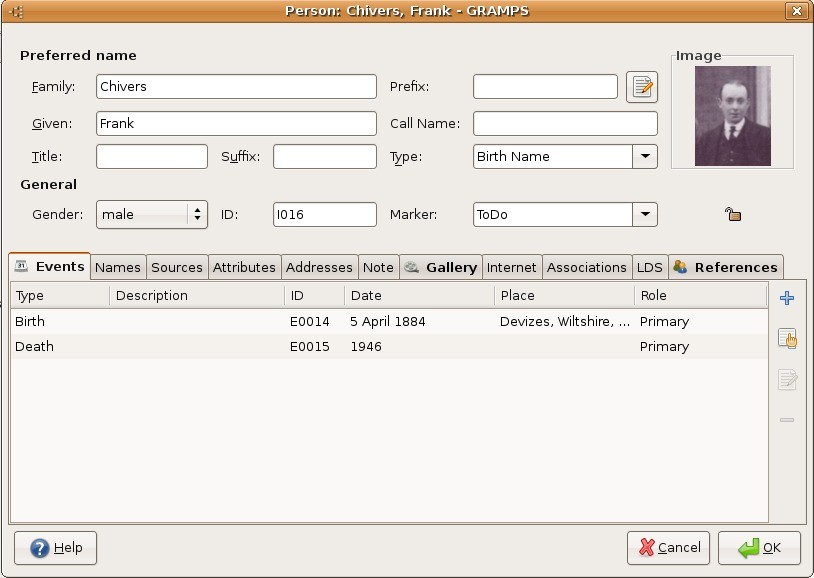
XML allows the database to be transferred more easily across to other computers. The system can cope with large numbers, and has been tested on databases in excess of over 100,000 individuals recorded.
Where to get it – at the time of writing, the GRAMPS version 2.2.6 is available through the Ubuntu Feisty Add/Remove programs, and select to show 'All open source applications'. To install, simply select this version and install. The latest release information can be found on the GRAMPS website (https://gramps-project.org). Ubuntu repositories can sometimes lag slightly behind, so make sure you have the latest version! If there is a newer version, you can go to the download section and download the latest package gramps_zzz.deb and gramps-help_zzz.deb, and install with your package manager, normally double-clicking the .deb file is sufficient.
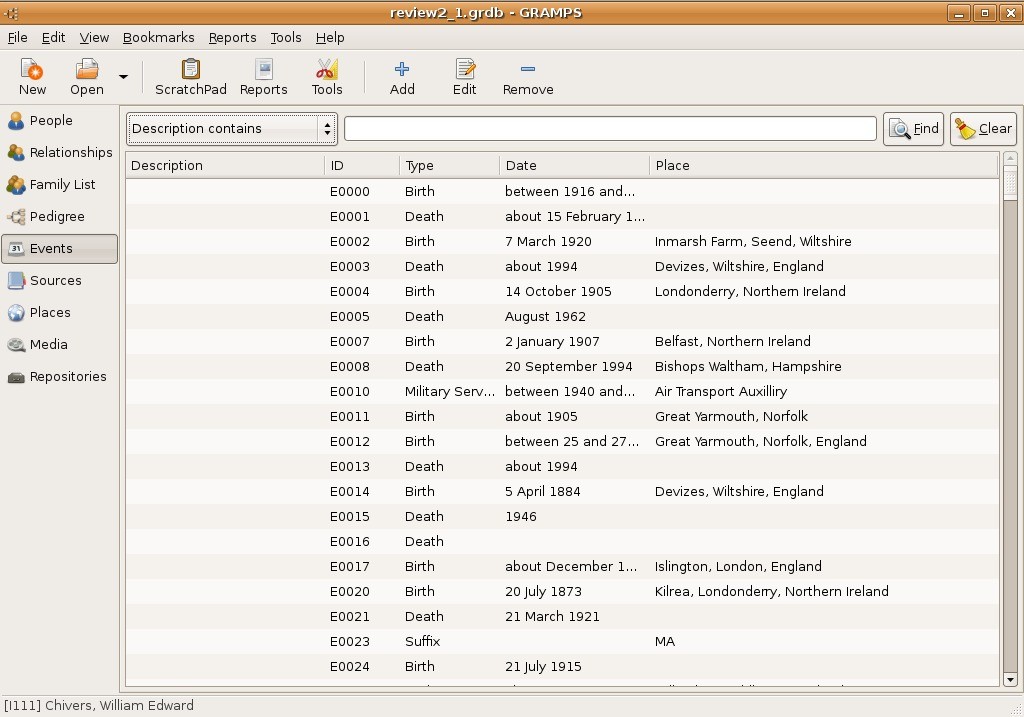
Once installed the program can be found in Applications > Office > GRAMPS genealogy system.
In addition to the standard installation, GRAMPS is also available on a LiveCD. This allows usage of the program on any i386 compatible PC directly off the LiveCD without installation required (currently only available for i386, not 64bit or Mac LiveCD, though the program does work on any Ubuntu install). The current version 3.0 includes GRAMPS 2.2.7 within an Ubuntu 7.04 LiveCD and is a great introduction to Ubuntu software. The CD also contains other open source software for the user, including Lifelines and GeneWeb. There is also a link on the desktop that will open up irc and get you directly into the #GRAMPS channel with one double click of the mouse, which is a really useful feature, and one that should be considered for core Ubuntu LiveCDs. One thing to remember is that if you want to save your work while using the livecd, you will need some kind of portable media. A usb stick is ideal. Such detail would be helpful to new users. Of course alongside this is a fully functioning Ubuntu, available for use or install. On a personal note; this was the route that the reviewer became fully interested in Linux and, more specifically, the *buntu distros and community.
Once you have created a database you can get to the interesting part of entering your data. The interface has a pleasing graphical nature, with appropriate icons and pedigree displays. Initially you enter the general individual details of name and gender. Then you need to enter details such as birth, death and occupation etc. each as a separate event within that person's life. This makes data entry a little longer as you need to open a new event for each item of data.
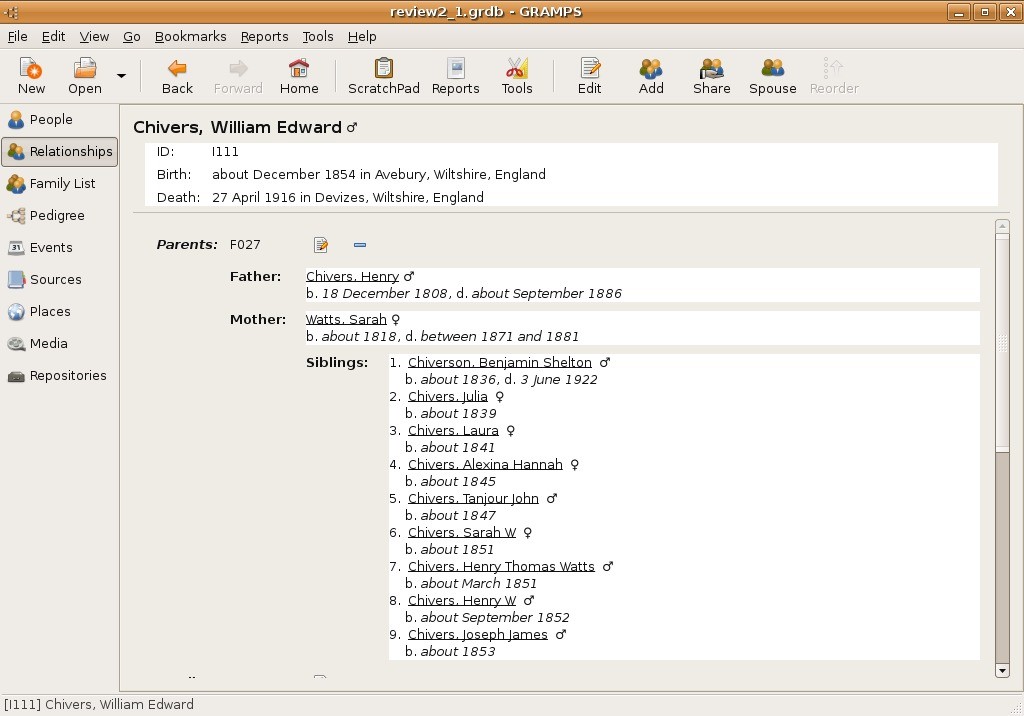
However, in understanding the system, this makes the data more qualitative. Other genealogical software may offer more entry on the initial individual's data page, but the GRAMPS system encourages methodical data entry backed up with source information. The events are structured to make data entry easier. For example the initial event shown is for Birth. If this has already been entered the next logical field is Death and this comes up automatically within the form.
As you add more and more data, so the additional views within GRAMPS become more useful. You can navigate and catalogue your data under the headings of People, Relationships, Family View, Pedigree, Events, Sources, Places, Media and Repositories. I have personally found that the Relationships view one of the easiest ways to navigate a database with more than 50 individuals.
As suggested earlier, documenting research findings are key to proving the validity of the genealogical data. The 'source' is the reference for each item of data, that gives it credibility. There can be many items of data within a source and GRAMPS has a 'scratchpad' that allows you to copy source reference between individuals within your tree. To your individual, you can add media, such as photographs, sound and movie clips that can be display or linked to from within the database.
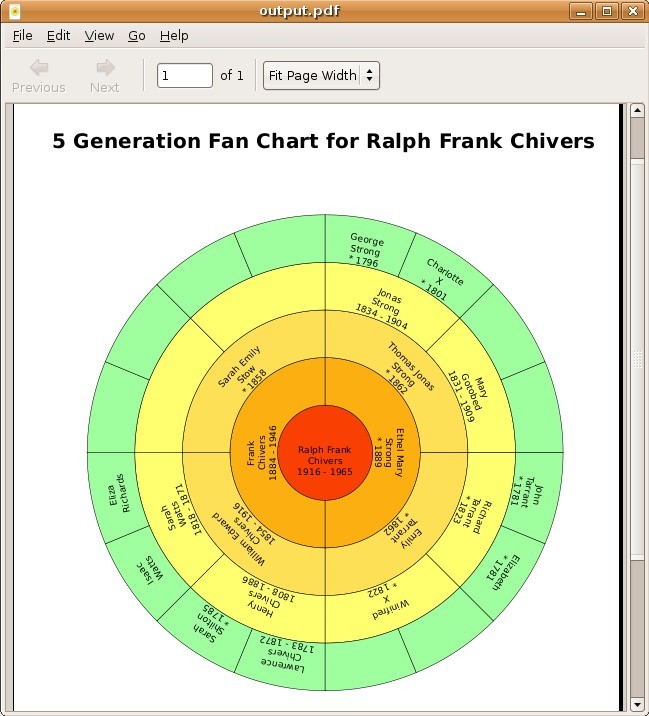
Once you have your database, it is good to make a hard-copy version to share, archive and refer to. GRAMPS can produce a fantastic array of output, including books that collate many aspects of your data and presents them in a single collection to your own specification. These reports can be made in a variety of formats including Open Document format, HTML, even SVG depending on the type of report. Charts, time lines and ancestral reports can all be made, and there is an active development in producing further report formats. In addition to this, a database can be output to for a website structure that can be uploaded to a server and displayed for all to see and navigate.
SUMMARY
PROS
- Strong database management with good community support and development multi-format export/output including XML, GEDcom and HTML
CONS
- extra clicks for basic data entry
- grdb database not easily portable
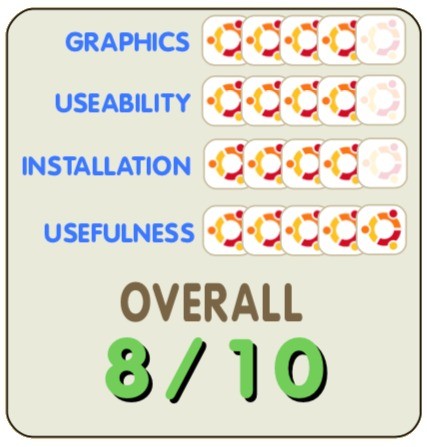
full circle issue #2 will have an exclusive interview with the creator of GRAMPS
